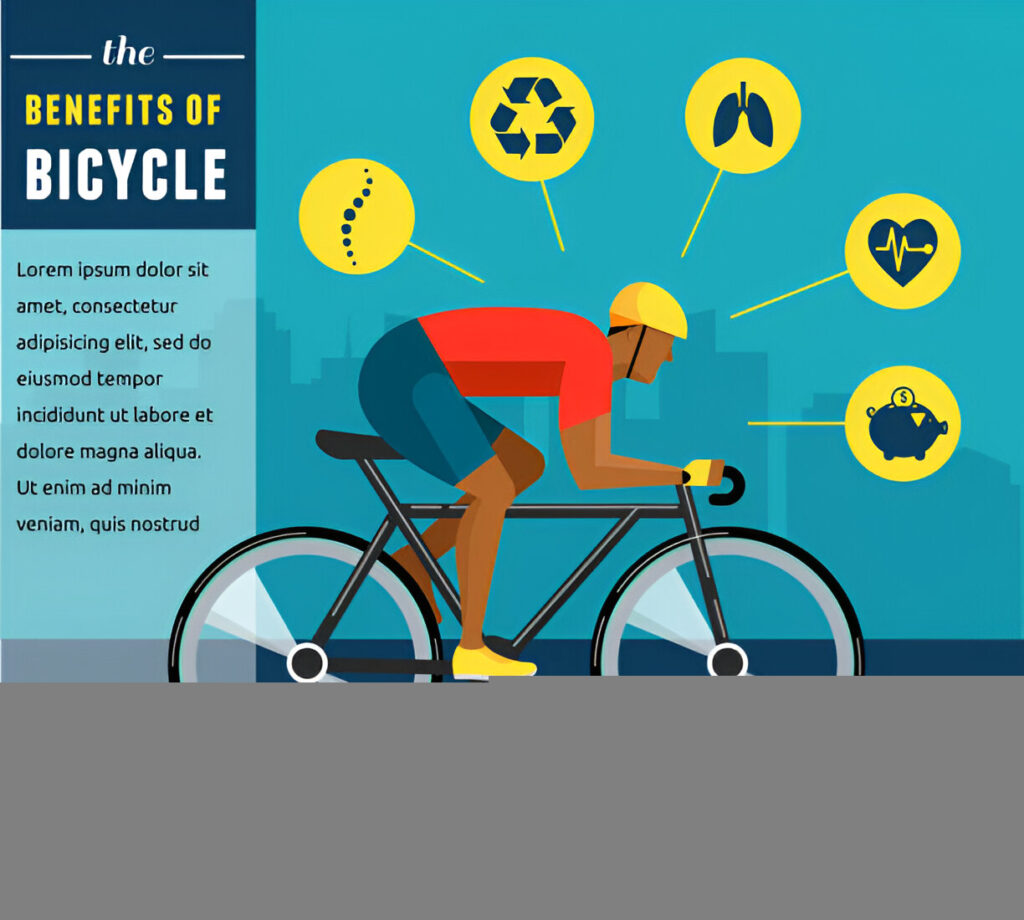Bicycling offers a remarkable combination of benefits that few other activities can match—simultaneously addressing personal health goals while providing practical transportation solutions. This dual-purpose nature has contributed to cycling’s growing popularity among diverse populations seeking both fitness improvements and efficient mobility options.
A Powerful Tool for Physical Transformation
The search for effective, sustainable exercise routines often leads to cycling as an optimal solution for those pursuing weight management goals. Cycling for weight loss has gained recognition among fitness professionals for several key advantages it offers compared to other cardiovascular activities, particularly for individuals beginning their fitness journey.
Unlike high-impact exercises such as running, cycling places minimal stress on joints while still delivering significant calorie-burning potential. This low-impact nature makes it accessible to individuals across a broader spectrum of starting fitness levels and body compositions. The seated position distributes weight more evenly, reducing pressure on knees, ankles, and hips that might otherwise become overloaded during weight-bearing exercises.
The metabolic benefits extend beyond mere calorie expenditure during rides. Regular cycling has been shown to increase basal metabolic rate, contributing to more efficient energy utilization even during rest periods. This effect, combined with the muscle-building stimulus cycling provides to the lower body, creates a favorable environment for body composition changes that support weight management goals.
Perhaps most importantly for sustained weight loss efforts, cycling offers psychological advantages that contribute to program adherence. The varied environments, potential for social interaction, and sense of exploration create intrinsic motivation that often remains elusive with gym-based exercises. Many individuals report that cycling seldom feels like obligatory exercise, instead becoming an enjoyable activity they actively seek rather than avoid.
The controllable intensity represents another key advantage for weight management purposes. Riders can precisely calibrate their effort level based on current fitness and goals, from gentle recovery rides to high-intensity interval sessions that maximize caloric expenditure and cardiovascular adaptation. This scalability ensures the activity remains appropriately challenging throughout a fitness journey, from initial stages through advanced progression.
Practical Transportation with Environmental Benefits
Beyond personal health benefits, cycling offers compelling advantages as a practical transportation solution, particularly in urban environments. Urban commuting by bike continues gaining popularity as city dwellers seek alternatives to congested roadways and crowded public transportation systems while simultaneously reducing their environmental impact.
The economic case for bicycle commuting proves increasingly persuasive as transportation costs rise. When accounting for vehicle payments, insurance, fuel, parking, and maintenance, automobile commuting often represents a household’s second-largest expense category. Bicycle transportation dramatically reduces these costs, requiring minimal maintenance expenditures and eliminating fuel and parking expenses entirely. Even when factoring occasional alternative transportation during inclement weather, the financial advantages remain substantial.
Time efficiency often surprises those new to bicycle commuting, particularly in congested urban areas. While maximum travel speed may be lower than motorized alternatives, the consistency of bicycle travel times—unaffected by unpredictable traffic congestion—frequently results in more reliable arrival times. The ability to utilize dedicated infrastructure that bypasses vehicle congestion further enhances this advantage in cities with developed cycling networks.
The environmental impact of shifting commuting modes cannot be overstated. Beyond the obvious elimination of tailpipe emissions, bicycle manufacturing and maintenance generate minimal carbon footprint compared to automobile production and operation. This reduced impact extends to decreased infrastructure requirements, from roadway construction and maintenance to parking facility development—all of which generate significant environmental costs in materials production and land utilization.
Perhaps most compelling for many urban commuters is the quality-of-life improvement that cycling transportation offers. Rather than experiencing commuting as stressful lost time, bicycle commuters often report this time as a positive transition period that improves mental well-being. The physical activity bookending workdays provides stress reduction benefits while simultaneously addressing exercise needs that might otherwise require dedicated time allocations.
Integration into Modern Lifestyles
The most successful adoption of cycling—whether for fitness, transportation, or both—occurs when it integrates seamlessly into existing lifestyles rather than requiring wholesale routine disruption. Small, incremental implementations often prove more sustainable than ambitious overhauls, whether beginning with weekend recreational rides before attempting commuting or starting with partial-route commuting before transitioning to full-distance bicycle transportation.
Technological advances have further simplified this integration, from route-planning applications that identify bicycle-friendly pathways to electric-assist options that make longer distances and challenging topography accessible to a broader population. Weather-specific clothing developments have extended practical riding seasons in variable climates, while improved lighting systems have enhanced safety during early morning or evening commutes.
The dual-purpose nature of cycling creates a powerful synergy for those who implement it as both exercise and transportation. The time efficiency of combining these previously separate activities enables healthy lifestyle implementation without requiring additional time blocks in already-crowded schedules. This practical approach to fitness often proves more sustainable than programs requiring dedicated facilities or significant time allocations beyond existing commitments.
As urban environments continue evolving to support active transportation through infrastructure development and policy adjustments, the benefits of cycling for both personal health and practical mobility will likely become increasingly accessible to diverse populations. This evolution represents a return to human-scaled transportation that offers compelling advantages for individuals and communities alike.



